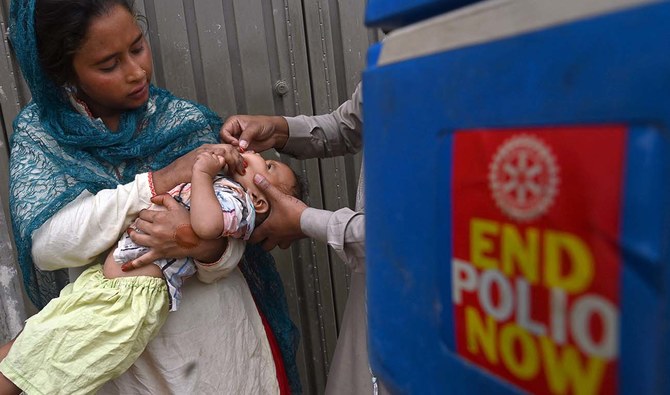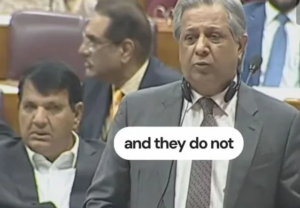
Pakistan’s struggle with polio remains a glaring public health crisis, refusing to abate despite decades of vaccination drives and awareness campaigns.
The latest confirmation of wild poliovirus type 1 (WPV1) in environmental samples from 21 districts across the country is a clear indication of the persistence of the disease.
While global efforts have brought the world to the brink of eradicating polio, Pakistan remains one of the last two countries, alongside Afghanistan, where polio remains endemic. The status underscores Pakistan’s persistent weaknesses in its healthcare infrastructure.
Polio, a highly infectious viral disease, primarily affects children under the age of five.
The virus spreads through contaminated water and food or contact with an infected person.
Once it invades the nervous system, it can cause irreversible paralysis within hours.
The discovery of WPV1 in environmental samples from 21 districts signals a persistent threat that demands immediate and sustained action.
Pakistan launched its first polio vaccination programme in 1974.
However, organised, nationwide campaigns began in the mid-1990s when the Global Polio Eradication Initiative (GPEI) intensified global efforts to eradicate the disease.
Since then, successive Pakistani governments have introduced various measures, including door-to-door immunisation campaigns, awareness drives, and partnerships with international organizations like UNICEF and the World Health Organization (WHO).
Despite these efforts, the country has struggled with operational, social, and security challenges.
In 2014, Pakistan reported 306 polio cases, the highest number globally.
By 2021, the number had dropped to just one case, sparking optimism.
However, the resurgence of the virus in 2022, with 20 reported cases and widespread environmental contamination, has raised alarm bells.
Misinformation regarding polio vaccines has been a persistent obstacle.
Rumours about vaccines causing infertility, containing harmful substances, or being part of Western conspiracies have led to widespread distrust.
Social media platforms have often amplified these misconceptions, making it harder to convince parents to vaccinate their children.
Polio vaccination teams have faced significant threats, particularly in Khyber Pakhtunkhwa (KP) and Balochistan provinces.
Militants have attacked health workers, believing vaccination drives are cover for espionage.
The 2011 revelation that a fake vaccination campaign was used to track Osama bin Laden worsened suspicions.
Since then, dozens of health workers and security personnel have been killed while carrying out immunisation efforts.
Remote and underserved regions, particularly in tribal areas, have remained difficult to access.
Poor infrastructure, rugged terrain, and transient populations have made comprehensive immunization coverage challenging.
Migratory patterns across the Pakistan-Afghanistan border further complicate eradication efforts.
While Pakistan’s polio eradication efforts have seen periods of strong political support, inconsistent policies, administrative lapses, and governance challenges have hindered sustained progress.
Frequent leadership changes in health ministries and uneven enforcement of vaccination mandates have also posed problems.
In 2024, environmental surveillance revealed WPV1 in 21 districts, signalling ongoing transmission.
Districts in KP and Karachi have emerged as primary hotspots, with samples indicating not only localised transmission but also cross-border connections with Afghanistan.
Health officials attribute this resurgence to disrupted vaccination campaigns during the COVID-19 pandemic, coupled with increased population mobility.
The presence of the virus in sewage samples, even in areas without reported polio cases, underscores the silent spread of the virus.
Despite intensified efforts, eradicating polio in Pakistan remains a daunting task. Sustained political commitment, community involvement, and innovative approaches are critical.
The detection of wild poliovirus type 1 (WPV1) in sewage samples is a clear sign of ongoing community transmission, posing a significant threat to unvaccinated children.
Misinformation, logistical challenges, and security concerns in conflict-affected areas have further complicated efforts to eliminate the disease.
Despite numerous nationwide immunisation drives, the eradication mission continues to face resistance, including vaccine hesitancy, public distrust, and attacks on frontline health workers.
Population movement, particularly between high-risk districts, adds another layer of complexity to containment strategies.
The continued circulation of the poliovirus not only jeopardises the health of Pakistan’s children but also poses a risk to global eradication initiatives.
Without a more robust, community-centred approach to immunisation, the country’s fight against polio will remain an uphill battle, hindering its overall public health progress.
Pakistan’s successful reduction of polio cases from 306 in 2014 to a single case in 2021 demonstrates that eradication is possible. The lessons learned from past successes, combined with renewed efforts and international support, still provide hope.
The persistence of polio is not merely a health issue but a matter of national responsibility and global significance.
Pakistan’s struggle with polio is a test of resilience, commitment, and collective action. Eradicating polio will not only safeguard the health of future generations but also underscore Pakistan’s role in the global fight against infectious diseases.




